Africa PGI Webinar Series on Pathogen Genomic Surveillance in Africa
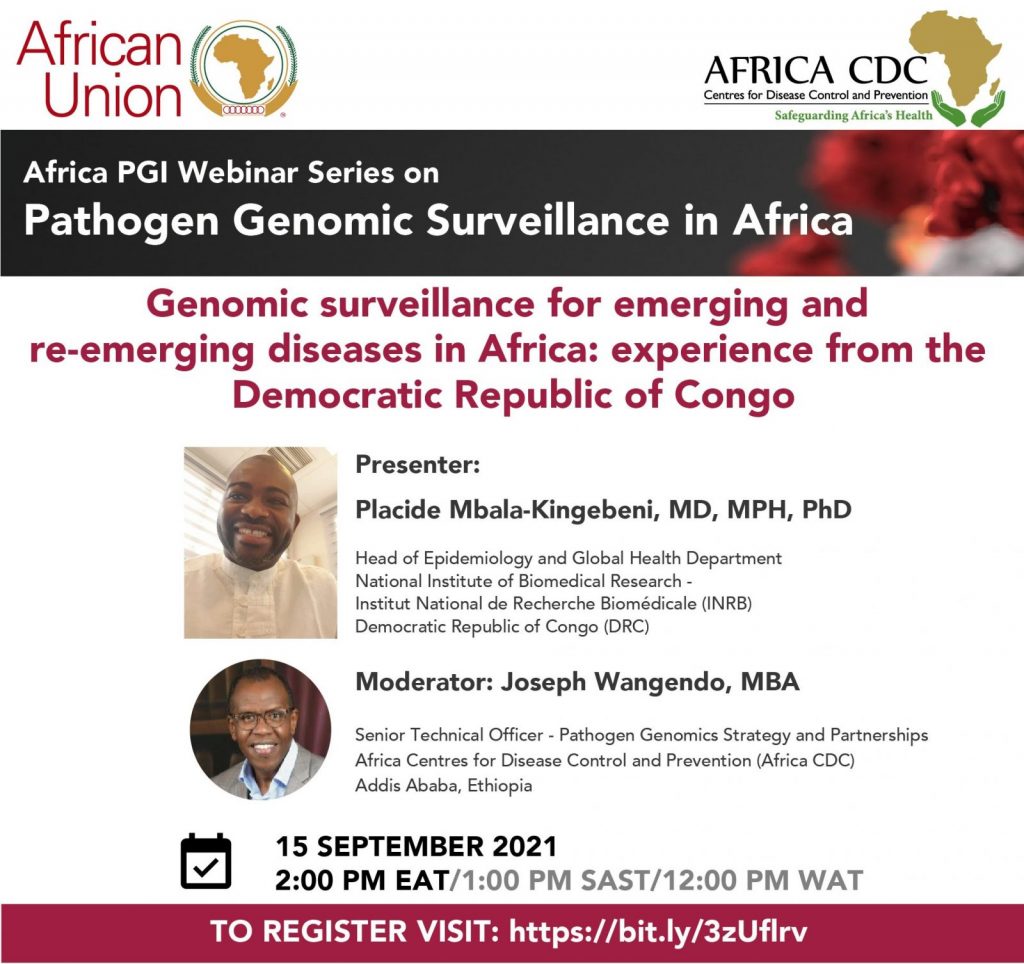
Interim operational guidance on SARS-CoV-2 genomic surveillance in Africa: An updated guide
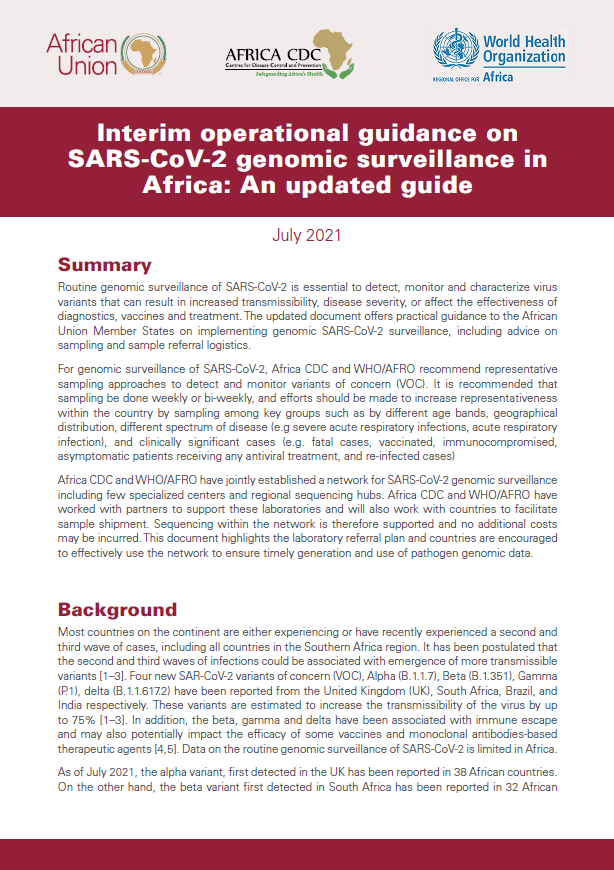
Summary Routine genomic surveillance of SARS-CoV-2 is essential to detect, monitor and characterize virus variants that can result in increased transmissibility, disease severity, or affect the effectiveness of diagnostics, vaccines and treatment. The updated document offers practical guidance to the African Union Member States on implementing genomic SARS-CoV-2 surveillance, including advice on sampling and sample […]
Biosafety and Biosecurity Initiative 2021 – 2025 Strategic Plan
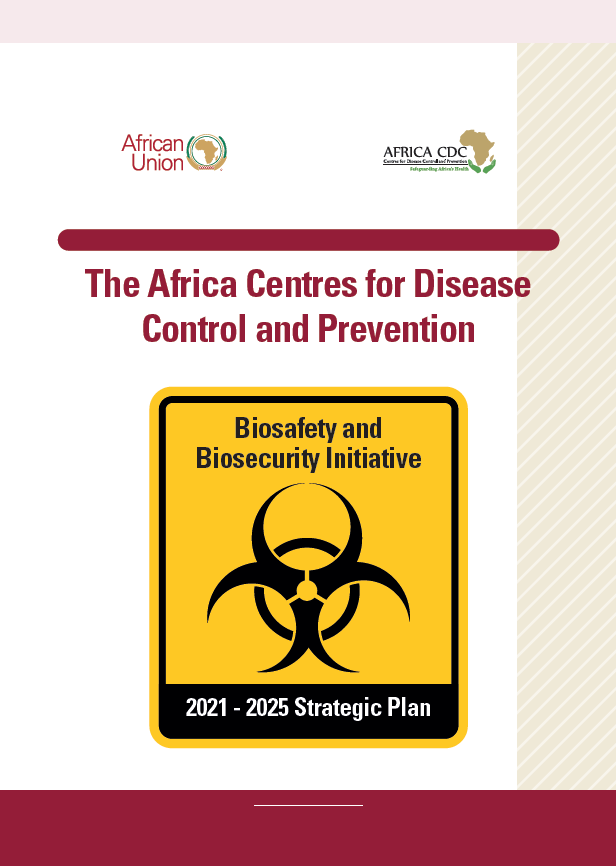
INTRODUCTION Taking into account the health challenges faced by the African continent and the necessity for an accountability framework for health security to protect citizens of the continent, the African Union (AU) Heads of States and Governments approved the establishment of the Africa Centres for Disease Control and Prevention (Africa CDC) through the Assembly decision […]
Podcast: Role of the Laboratory and Genomic Sequencing in COVID-19 Response for Africa
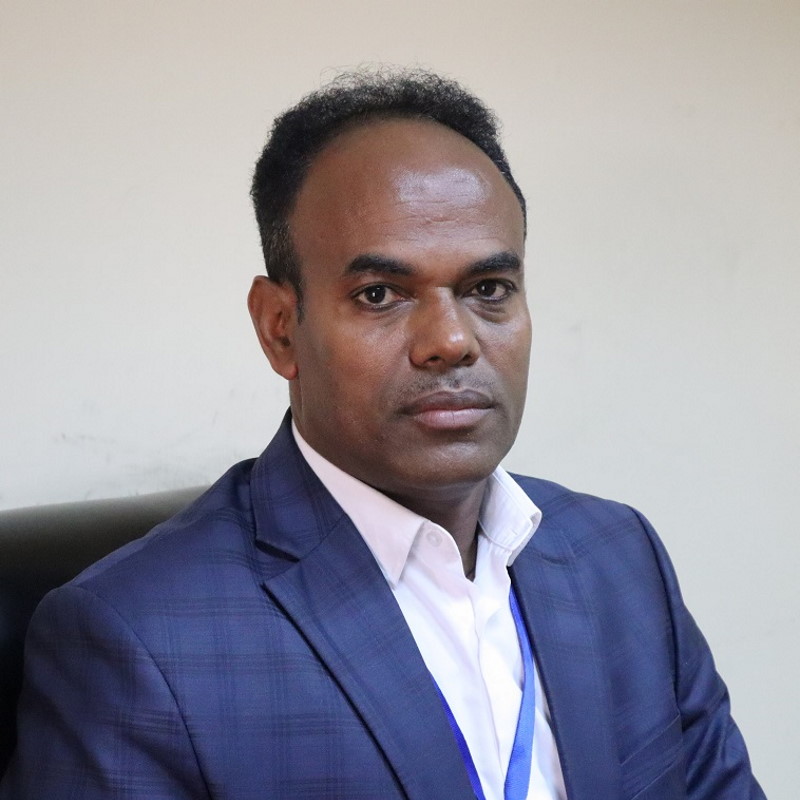
[Africa CDC Podcast series: Courtesy Dr Noah T Fongwen, Research Fellow, Africa CDC] – Dr. Yenew Kebede Tebeje, Head, Laboratory Systems Africa CDC provides some insights on the ‘Role of laboratory and genomic sequencing in the COVID-19 pandemic response for Africa’.
Report: Virtual Meeting on The African COVID-19 Vaccine Financing and Deployment Strategy
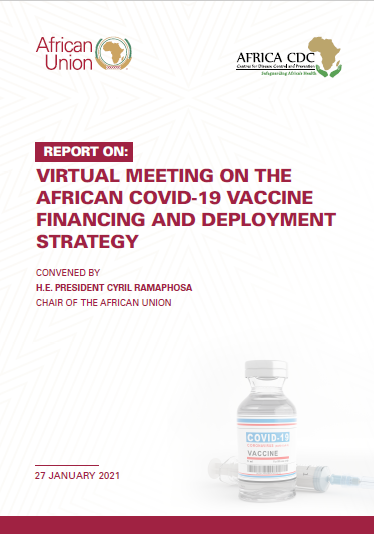
Key points • The COVID-19 pandemic has caused devastation on the African continent, with more than 3.4 million confirmed cases and nearly 87,000 COVID-19 deaths to date; it has also severely impacted the continental economy, education, health programmes and other elements critical to Africa’s Agenda 2063. • Since the beginning of the pandemic, the African […]
Africa Regulatory Taskforce has Endorsed the Emergency Used Listing for Two Versions of the AstraZeneca-Oxford Vaccine
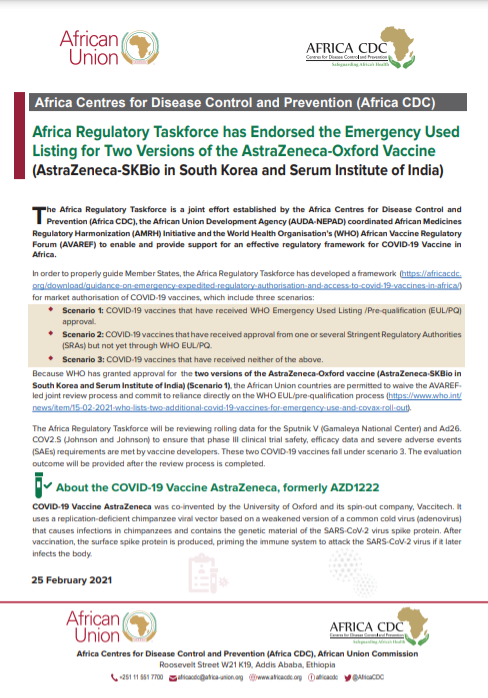
Africa Regulatory Taskforce has Endorsed the Emergency Used Listing for Two Versions of the AstraZeneca-Oxford Vaccine (AstraZeneca-SKBio in South Korea and Serum Institute of India) The Africa Regulatory Taskforce is a joint effort established by the Africa Centres for Disease Control and Prevention (Africa CDC), the African Union Development Agency (AUDA-NEPAD) coordinated African Medicines Regulatory […]
Monitoring and Evaluation of COVID-19 Rapid Antigen Diagnostic Test Rollout in Africa
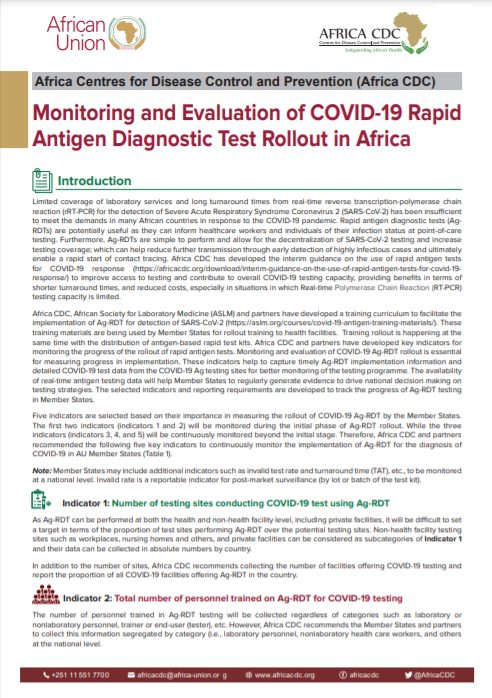
Introduction Limited coverage of laboratory services and long turnaround times from real-time reverse transcription-polymerase chain reaction (rRT-PCR) for the detection of Severe Acute Respiratory Syndrome Coronavirus 2 (SARS-CoV-2) has been insufficient to meet the demands in many African countries in response to the COVID-19 pandemic. Rapid antigen diagnostic tests (AgRDTs) are potentially useful as they […]
Interim Guidance on the Use of Rapid Antigen tests for COVID-19 Response
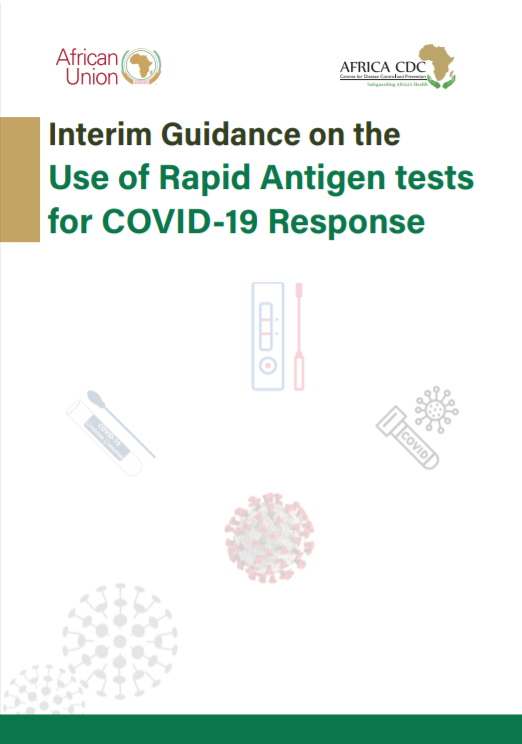
Purpose of this guidance This document provides guidance to Ministries of Health (MOHs), laboratory personnel and implementing partners in African Union Member States on the application of rapid antigen tests to COVID-19 testing. The guidance serves as reference for policymakers, laboratory leads, implementing partners, and experts on use case scenarios and associated testing algorithms for […]
Questions and answers on COVID-19 vaccine
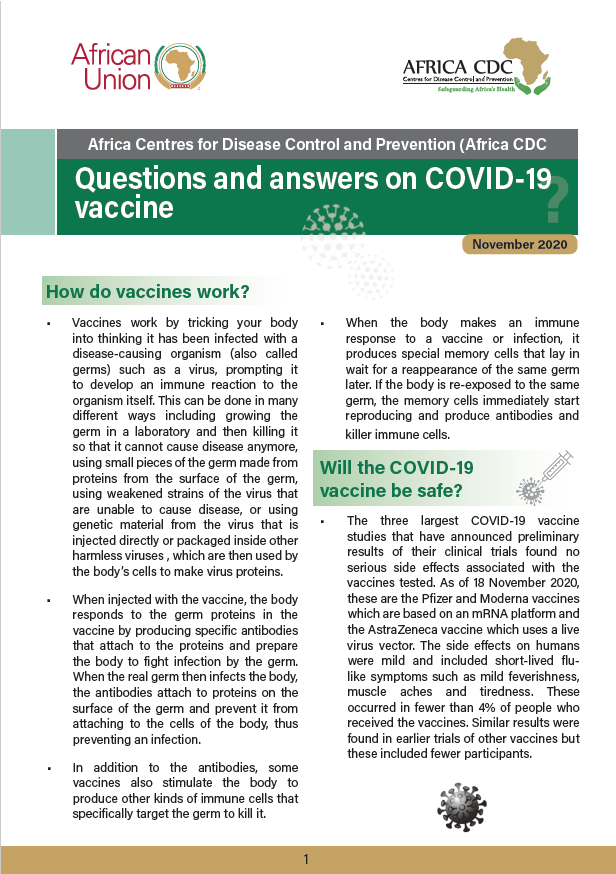
How do vaccines work? Vaccines work by tricking your body into thinking it has been infected with a disease-causing organism (also called germs) such as a virus, prompting it to develop an immune reaction to the organism itself. This can be done in many different ways including growing the germ in a laboratory and then […]
Guidance on pooled testing for severe acute respiratory syndrome coronavirus 2 (SARS-CoV-2)

Purpose of this document: The purpose of this document is to provide guidance on the use of pooled sample testing strategy in coronavirus disease (COVID-19)testing laboratories of the African Union Member States for scaling up SARS-CoV-2 nucleic acid testing capacity with the available resources. The current document describes the effect of factors such as the […]
